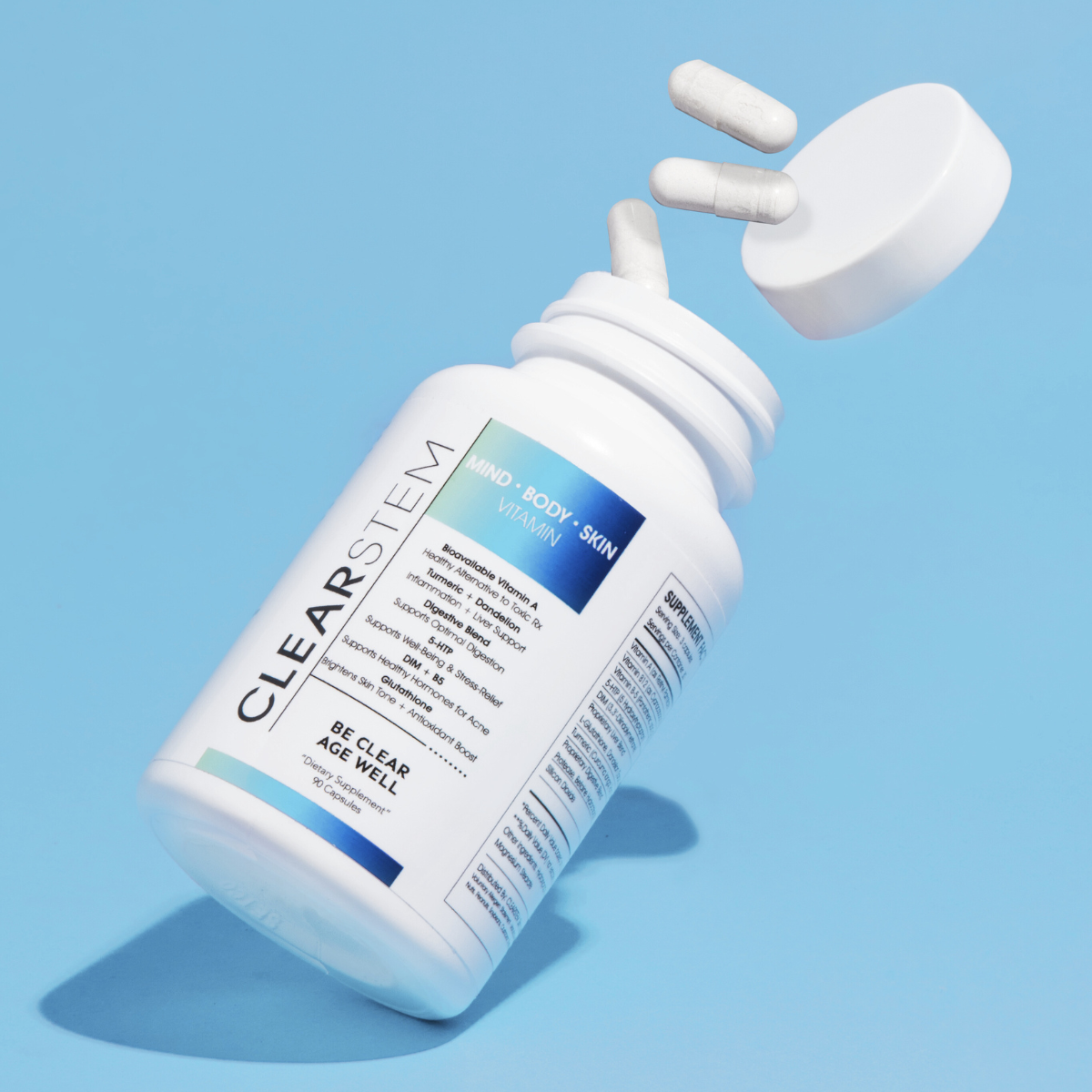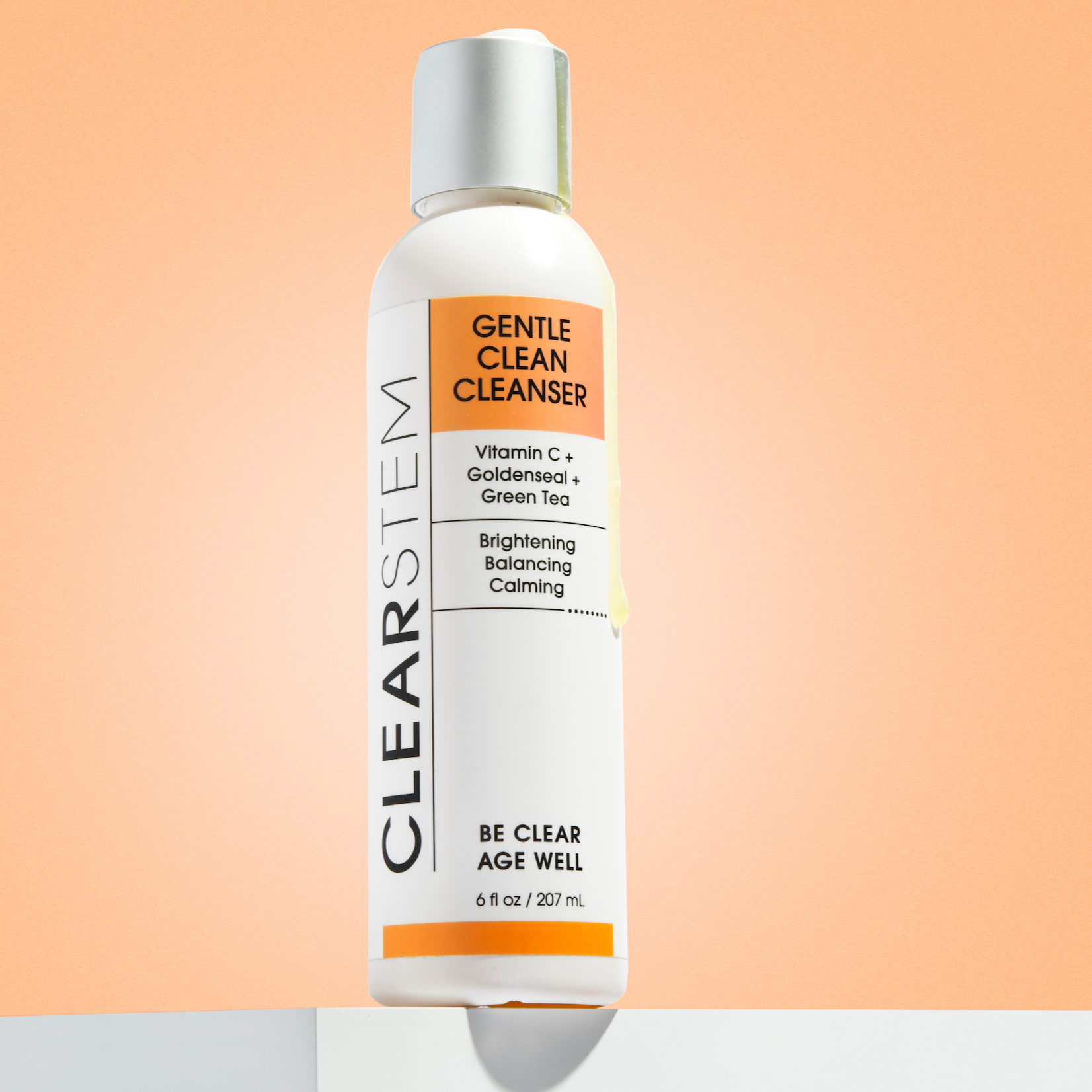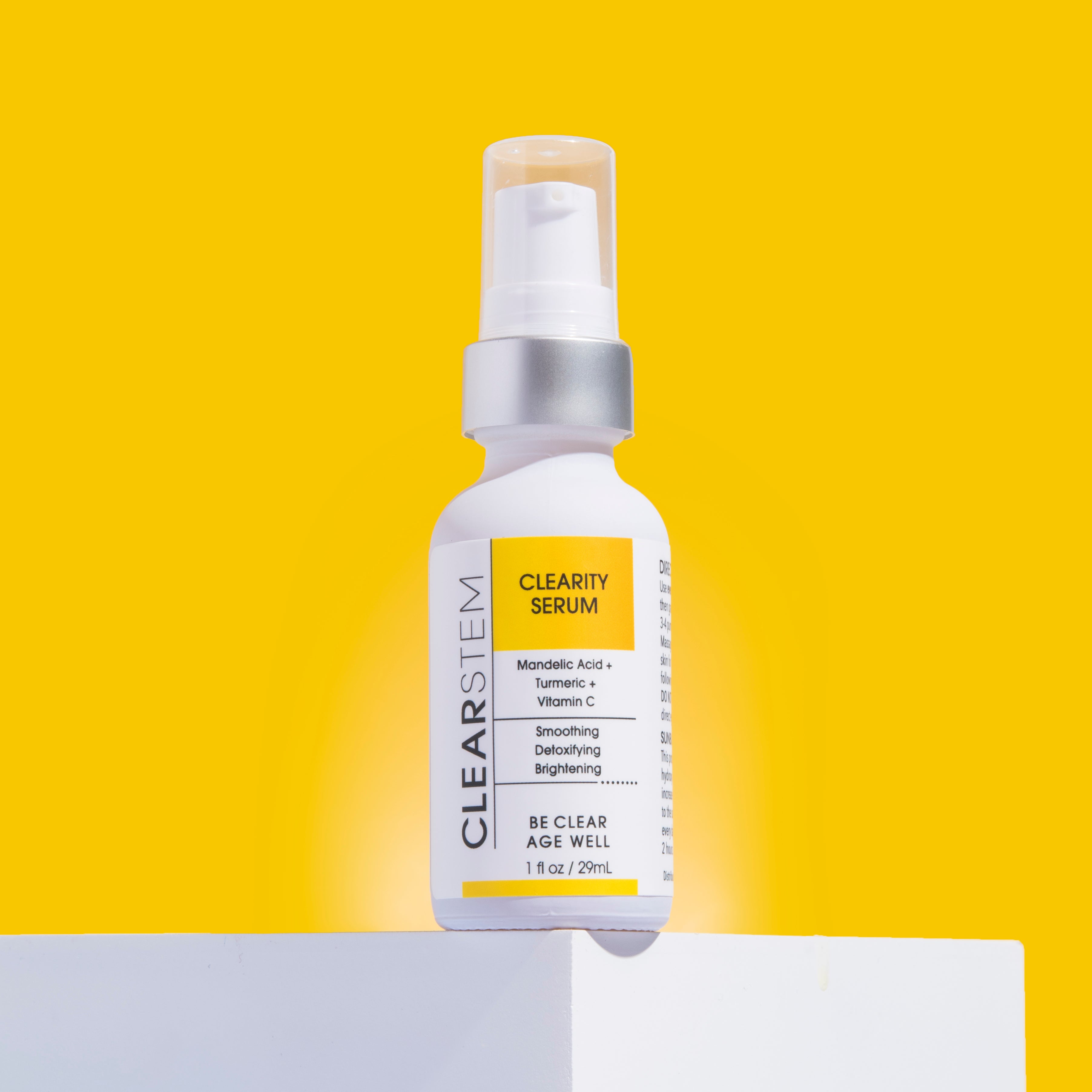Some people believe that eye cream is just one more step to their current skincare regime. Although it technically is an additional step, it's a very necessary and impactful step regardless of your age. So, who should use eye cream? Who's the ideal candidate? Although there isn't a specific age to officially start using an eye cream, prevention is key. Being proactive is such an essential aspect of taking care of your skin. Top skincare specialists agree that prevention is preferable and much easier than correcting skincare issues later on.
Even if you don't have fine lines or wrinkles just yet, we've all had a run-in or two with dreaded puffy eyes or dark circles! More importantly, no matter your age, the skin around your eyes is much thinner, more delicate, and fragile compared to other areas of the face. Eye cream actively treats the sensitive and dehydrated skin under and around the eye. Because the under-eye skin's natural oil production decreases with age, and because of having fewer oil glands as it is, it's more susceptible to dark circles, puffiness, and crow's feet regardless of your age.
Even more common are factors that directly affect the delicate area around the eyes, such as harsh weather conditions, allergies, and genetics which everyone has direct experience with. Excessive cleansing with hot water or using harsh makeup removers are other common habits that we all have been guilty of engaging in from time to time.
It is crucial to find a specially formulated eye cream to satisfy your under-eye needs to actively hydrate and protect the delicate eye area from dark circles, puffiness, and fine lines and wrinkles. With thousands of eye creams on the market, you might be wondering which eye cream is best for me? Fear not, we've got you covered. The experts at CLEARSTEM Skincare will guide you through how to choose your perfect eye cream for all your under-eye concerns!
Important Ingredients to Make Sure Your Eye Cream Contains
Knowing what to look for in an eye cream depends on your skin type and skin concerns. Of course, two of the most vital components you want in an eye cream is hydration, hydration, hydration! In addition to hydration, your eye cream should also contain impactful active ingredients that offer protection and restoration to your unique concerns and goals.
While eye cream is an essential component of any skincare regimen, finding the correct formula for sensitive skin can be difficult. You will want to shy away from any product that causes redness, itching, or inflammation, which can intensify those same concerns we are trying to steer clear of in the first place, like dryness, puffiness, and dark circles. In addition, be vigilant in checking if they contain any mineral oil, petroleum jelly, or parabens. Finally, make sure to use an eye cream that contains 100 percent natural components such as replenishing botanicals, stem cells, and peptides. (Source 1)
Fine lines, wrinkles, puffiness, dark circles, and discoloration are among the most common under-eye skin issues. Begin by determining which of these issues is the most bothersome to you. Just like picking a moisturizer for your face, you must then choose the appropriate texture of the cream. As a general rule of thumb, gels and light creams work best for normal to oily skin, and for dry skin, mid-weight and more rich creams are most effective. (Sources 1 & 2)
Here are some of the most popular and impactful ingredients that address the most common under eye skin concerns:
- Antioxidants
- Peptides
- Ceramides
- Niacinamide
- Hyaluronic Acid
Acne-Prone Skin
If your skin is oily and acne-prone, as stated above, the texture of your eye cream should be lightweight. Think gels instead of a heavier moisturizing cream. It's essential if your skin is acne-prone that the product is fragrance-free, non-comedogenic, and made with nutrient-packed components that are gentle enough for sensitive skin. Look for phrases like hypoallergenic, fragrance-free, and ophthalmologist-tested on the label, as these are more gentle. It's always a great idea to do a patch test before using a new product, especially for the skin around your eyes. Look for gentle and natural ingredients such as:
- Chamomile: Chamomile is used in several natural skincare products because of its soothing and healing effect on the skin. Chamomile contains apigenin which is an antioxidant. (Source 4)
- Green Tea Extract: Green tea extract is commonly used in skincare because it replenishes and protects the skin, decreases sebum, and minimizes signs of aging. (Source 5)
- Stem Cells: Because of their ability to help rebuild and repair skin, plant stem cells are one of the most fascinating advances in skincare! They originate from both plants and fruits and can aid in accelerating cellular regeneration to improve and reduce signs of aging. Because plant stem cells have the ability to differentiate into a variety of different cells, they help cultivate the growth of your skin's own stem cells, which helps to strengthen collagen and promote elastin synthesis. (Source 17)
Oily Skin
Gel-based products offer a light yet hydrating effect on the skin for those with oily skin. Gel-based products quickly absorb and don't give a greasy feeling while still doing their job, hydrating. Similar to those with acne-prone skin, you'll want to be on the lookout for ingredients that are oil-free, ophthalmologist-approved, non-comedogenic, and hypoallergenic. In addition, look out for those same all-natural ingredients such as chamomile, green tea extract, and AHAs that will still offer effectiveness while being gentle enough to keep breakouts at bay.
Dry Skin
If you're someone with dry skin, you'll want to stick with hydrating eye creams that are heavier and thicker in texture. The most effective ingredients to look for are:
- Ceramides: Ceramides keep water in the skin from evaporating too quickly, preventing trans-epidermal water loss. (Source 7)
- Niacinamide: Niacinamide is a potent antioxidant that decreases hyperpigmentation, reduces redness, and soothes sensitive skin. (Source 8)
- Hyaluronic Acid: Hyaluronic Acid is known for binding water into the skin. (Source 7)
- Glycerin: Glycerin is a moisturizing agent that draws water from deeper layers of your skin and the air into the outer layer of your skin. (Source 9)
- Vitamin E: Vitamin E hydrates the skin by locking in moisture resulting in plump, hydrated skin. (Source 10)
BRIGHTEYES eye gel is a versatile eye treatment that tackles the most common under-eye concerns. It is specifically formulated to target crow's feet, dark circles, and puffiness and is safe for the entire eye area. This powerful blend of stem cells, brightening botanicals, and three different types of peptides reduce puffiness, crow's feet, and dark circles within the first week.
How to Choose Whether to Apply Your Eye Cream During the Day or Night
There are a few options when it comes to applying your eye cream. You can use eye cream in the morning, in the evening before bed, or both. However, to get the maximum benefits from your selected eye cream, it's recommended to apply it day and night. To do this, you may want two different eye creams with different formulas. The daytime eye cream should be lighter in texture and ideally contain an SPF. Your evening eye cream should be richer and should not contain SPF.
Evening
Bedtime is the ideal time to address many skin concerns at once. Nighttime eye creams are developed with impactful ingredients that support the skin's natural healing process while you sleep.
To get the most out of nighttime eye cream, you'll need to use a formula that promotes rejuvenating and repairing while offering an ultra-hydrating formula. Look for powerful active ingredients that encourage maximum hydration, such as peptides, hyaluronic acid, niacinamide, stem cells, and enriching botanicals.
It's best to cleanse your face and apply your nighttime skincare product an hour or so before going right to bed to allow the replenishing active ingredients to thoroughly absorb into your skin. This prevents the products from rubbing off onto your bedding. (Sources 11,12 & 13)
Morning
If you are using two eyes creams, one in the morning and one in the evening, for maximum results, we recommend using a lightweight product that seamlessly sits under your makeup. To avoid wrinkles and to offer maximum protection to an already vulnerable area, it's essential to look for an eye cream with SPF.
Other effective active ingredients to look for in a morning eye cream are caffeine and antioxidants. Caffeine is an ingredient that has been proven to help minimize and shrink blood vessels. It's a vasoconstrictor and can shrink the width of blood vessels reducing dark circles and puffiness around the eyes. Antioxidants protect the delicate under-eye area from external aggressors such as harsh weather or pollution. (Sources 1,14 &15)
Conclusion
Regardless of age or skin type, everyone can benefit from a moisturizing under-eye cream. Hydration is essential for maintaining the skin's natural protective barrier while also giving it a healthy, youthful appearance.
Prevention and being proactive are integral parts of taking care of your skin. The more hydrated, protected and replenished your under-eye area is, the more youthful and healthy the area will look. More importantly, the area will be stronger and healthier to minimize, reduce and delay signs of aging.
With any skin concerns, lifestyle choices in addition to a solid skincare routine will only further promote healthy and youthful-looking skin. Getting enough rest, staying hydrated, eating a nutrient-rich diet, and staying away from unhealthy lifestyle habits such as smoking or over-consuming alcohol can further help your skincare products do their job and even make their job easier! (Source 16)
Sources:
Source 1: How to Apply Eye Cream
https://www.healthline.com/health/how-to-apply-eye-cream
Source 2: 12 Best Eye Creams for Every Concern
https://thedermreview.com/eye-cream/
Source 3: The Best Eye Creams for Sensitive Skin
https://thedermreview.com/eye-creams-for-sensitive-skin/
Source 4: 5 Skincare Benefits of Chamomile
https://www.byrdie.com/skincare-benefits-of-chamomile-4691698
Source 5: Green Tea Is the Superhero Ingredient for Everything From Acne to Anti-Aging
https://www.byrdie.com/green-tea-for-skin-4843092
Source 6: Everything You Need to Know About Using Alpha Hydroxy Acids (AHAs)
https://www.healthline.com/health/beauty-skin-care/alpha-hydroxy-acid#_noHeaderPrefixedContent
Source 7: Ceramides & Hyaluronic Acid: Their Role in Achieving Beautiful Skin
https://www.cerave.com.au/blog/everyday-skin-care/ceramides-and-hyaluronic-acid
Source 8: The Infinite Ways Niacinamide Benefits Your Skin
https://www.glamour.com/story/niacinamide-benefits-skin-care
Source 9: Is Glycerin Good for Your Face and Skin?
https://www.healthline.com/health/glycerin-for-face#what-is-it
Source 10: Vitamin E for Dark Circles: Does It Work?
https://www.healthline.com/health/beauty-skin-care/vitamin-e-for-dark-circles#vitamin-e-benefits
Source 11: 12 Best Eye Creams for Every Concern
https://thedermreview.com/eye-cream/
Source 12: The Best Eye Creams For Every Concern
https://www.vogue.com/article/best-eye-cream
Source 13: Should You Apply Eye Cream In The Morning Or At Night?
https://www.womenshealthmag.com/beauty/a19865004/when-to-apply-eye-cream/
Source 14: These Caffeine Eye Creams Are Better Than Coffee
https://www.refinery29.com/en-us/caffeine-eye-cream
Source 15: The Best Ingredients To Look for in an Eye Cream
https://www.southernliving.com/fashion-beauty/skin/best-ingredients-for-eye-cream
Source 16: A Specific Guide to Caring for the Skin Around Your Eyes
https://www.everydayhealth.com/skin-beauty/specific-guide-to-caring-for-the-skin-around-your-eyes/
Source 17: Plant Stem Cells
https://www.dermstore.com/ingredient/plant-stem-cells.list









